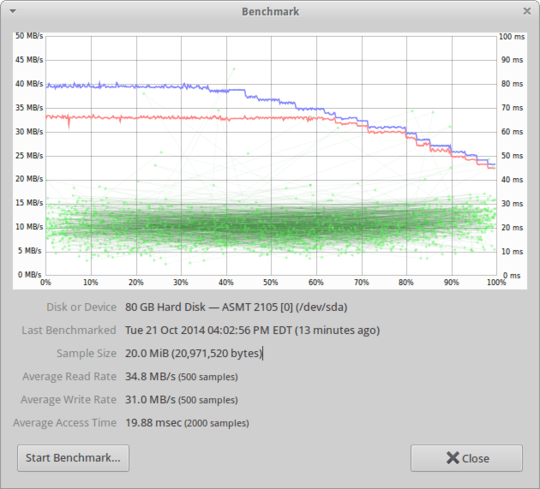0
1
I'm using gnome-disks to do a benchmark on an old 5400RPM Hitachi HDD that I pulled from a PS3. It's connected to my computer through an external USB 3.0 enclosure. Here's the output graph from the benchmark:

Why does the speed start steadily decreasing about halfway through the benchmark? I ran all the SMART self-tests and it said everything was fine, the drive is healthy. So what's wrong?
On another note, 35MB/s seems a bit slow. Don't even 5400 RPM hard drives generally run faster than that? Is it because I'm using an external USB enclosure and not connecting directly to SATA?
I know this is a dupe, havent looked for the live post though. The reason the disk performance drops is that the cached data is flushed. – Keltari – 2014-10-21T20:37:01.260